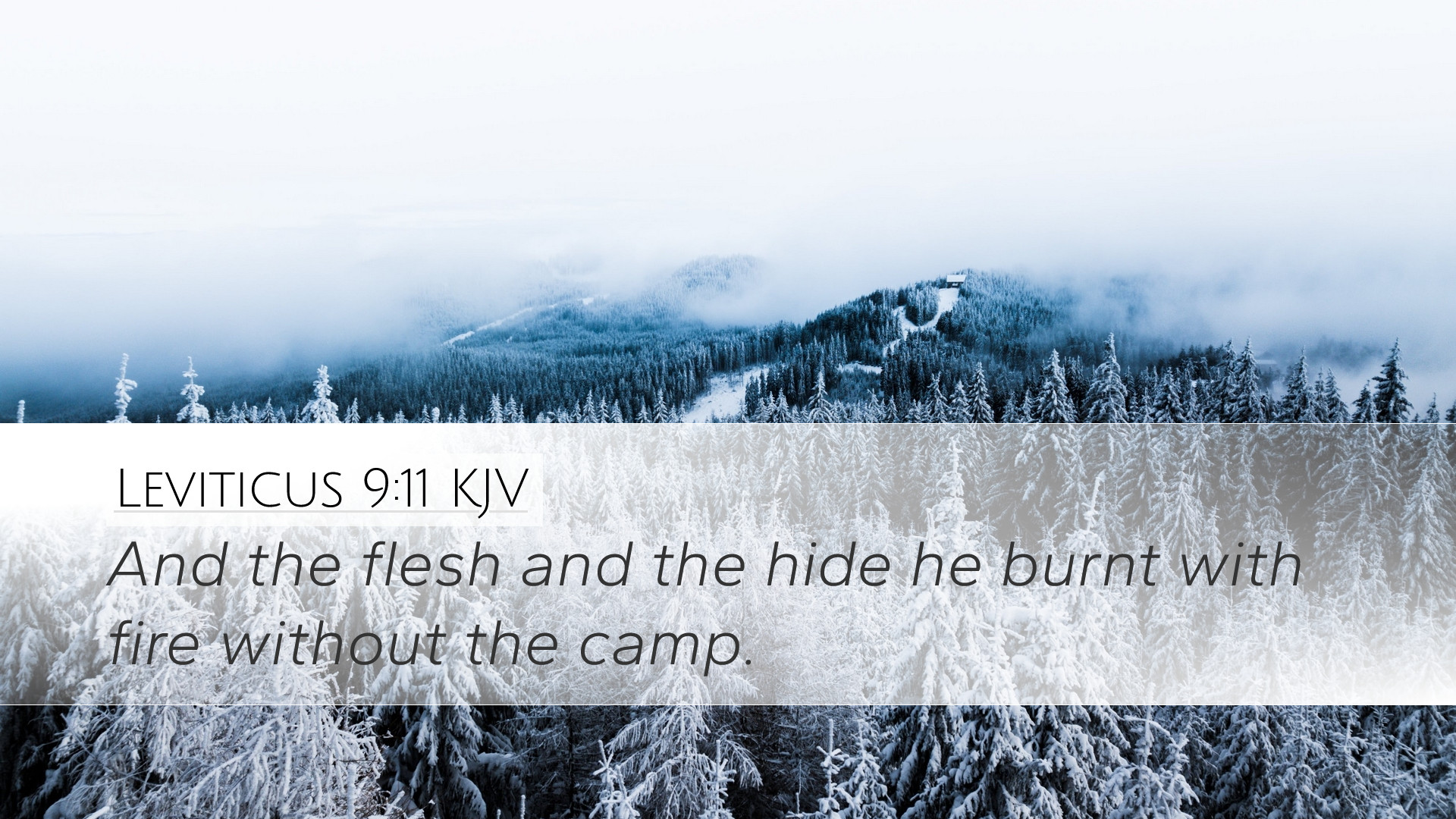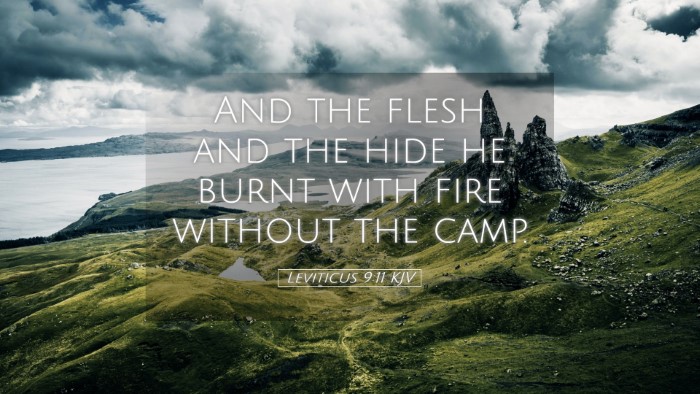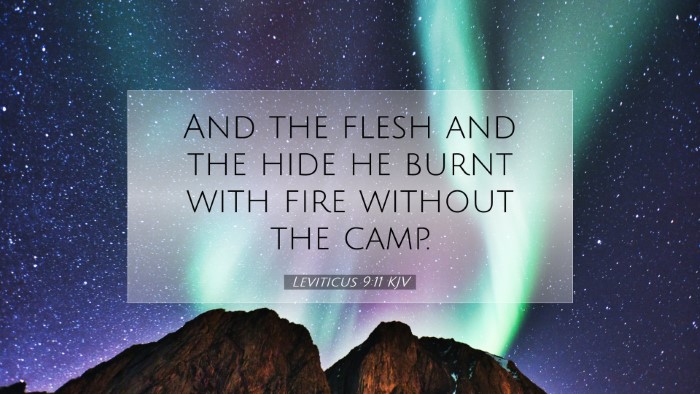Commentary on Leviticus 9:11
Verse Context: Leviticus 9:11 states, "And the flesh and the hide he burned with fire outside the camp." This verse is part of the larger narrative surrounding the consecration of Aaron and his sons as priests, depicting critical aspects of their initial sacrifices and the significance of atonement in Israelite worship.
Introduction
The sacrificial system established in the book of Leviticus forms the foundational framework for understanding the holiness of God and the means He provided for atoning for sin. In Leviticus 9, we witness the culmination of these preparations as Aaron officiates at the altar for the first time. The verse in consideration reveals the procedure related to the offerings and the symbolism associated with the sacrifices, focusing on the aspects that would greatly inform future generations on the gravity of sin and the necessity of atonement.
Exegetical Analysis
This verse, nestled within the inauguration of the priesthood, draws attention to the practicalities and rituals associated with sin offerings. Commenting on this, Matthew Henry emphasizes that the instruction to burn the flesh and hide outside the camp reflects the seriousness of the sins that necessitate such a sacrifice. The act of burning symbolizes total separation from the holiness of God and indicates the removal of sin from the community.
Albert Barnes notes that burning these parts outside the camp was not merely a physical act but laden with spiritual significance. It served as a vivid illustration of the need for atonement, signaling to the Israelites that sin leads to death, and the only recourse is through sacrifice. The external location for the burning, away from the holy precinct of the camp, underscores the idea of sin being "outside" the divine presence.
Theological Implications
The action of burning the flesh and hides speaks to the concept of expiation and propitiation. Adam Clarke interprets this act as an illustration of how sins are provisioned for; sin must be dealt with thoroughly, not just superficially. The fire that consumes the sacrifice can be seen as a representation of divine judgment upon sin, highlighting that God’s justice is fulfilled through sacrifice. It also affirms that without the shedding of blood, there is no forgiveness of sins, a principle echoed throughout Scripture and culminating in the work of Christ on the cross.
Symbolism of the Sacrificial Act
-
Separation from God:
The act of burning outside the camp signifies that sin separates humanity from God, illustrating the need for atonement to restore that relationship.
-
Understanding Holiness:
The directive to remove the burnt remains from the camp reflects an understanding of God's holiness and the necessity for purity among His people.
-
Preparation for Worship:
This process highlights the importance of being cleansed before approaching God, a theme persistent throughout the Old Testament and ultimately fulfilled in Christ.
Practical Applications
For pastors, students, and theologians, the insights drawn from Leviticus 9:11 can inform discussions on sin and atonement within theological education and pastoral ministry. Here are a few key applications:
-
Understanding Atonement:
Exploring the nature of atonement as depicted in Leviticus provides a backdrop for understanding New Testament theology regarding Jesus as the ultimate sacrifice.
-
Exhortation to Holiness:
The removal of the sacrifice outside the camp can serve as a reminder for congregations to pursue holiness and to understand the seriousness of sin.
-
Teaching on Sacrifice:
When teaching on sacrifice, one can draw parallels between the Old Testament practices and New Testament teachings, enriching the audience's understanding of God's redemptive plan.
Conclusion
Leviticus 9:11 serves as a pointed reminder of the seriousness of sin and the necessity of sacrifice within the community of Israel. The burning of the flesh and hide outside the camp not only illustrates the gravity of sin but also foreshadows the ultimate sacrifice of Jesus Christ. Through such sacrifices, the Israelites could approach God with a sense of restored relationship, paving the way for future understandings of atonement and redemption that resonate through Christian teaching today.


